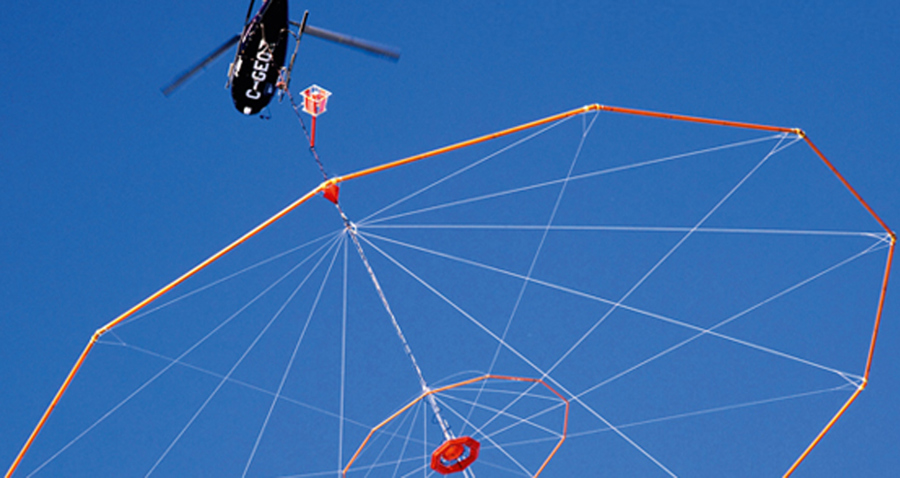
As the search for mineral and oil resources is increasingly carried out in areas of the world that are difficult to access, sophisticated geophysical survey equipment has been developed that not only offers high degrees of accuracy and discrimination, but is also capable of being operated from a helicopter.
One of the world leaders in this field is Geotech Ltd. (Aurora, Ontario, Canada) who offers, on a global basis, full-service airborne geophysical surveys using its proprietary VTEM systems. Currently around the world the company has 30 VTEM systems in service carrying out surveys for clients involved primarily in mineral and petroleum exploration.
Until recently the shells that supported the VTEM system were produced as singleskin components by Lakeside Creative Composites (LSCC), based in Oakville on the outskirts of Toronto, Canada, who specialize in the design, engineering and production of engineered composites for a variety of technical applications in fields such as medical, automotive and wind energy.
With the need to carry out the surveys at higher altitudes (greater than 4,900 meters, 16,000 ft.), LSCC was asked to investigate re-designing the shells to reduce weight without compromising the component's ability to support and protect the survey equipment. In particular the shells had to offer excellent abrasion resistance as there is always the risk of the system being dragged along the ground during the landing phase of the survey operation.
LSCC analyzed a variety of different laminate scenarios and produced a number of test prototypes before arriving at the optimum solution for the shells. The final laminate comprises custom-produced aramid/glass reinforcements, an epoxy matrix and Divinycell structural cores. To maximize the laminate quality and ensure excellent skin-to-core bonding performance, LSCC produces the shells using a resin infusion process over male moulds.
The performance of this sandwich structure is such that LSCC has been able to reduce the weight of the shells by more than 65%, while offering excellent abrasion resistance, and without compromising the structural performance of the survey equipment.
